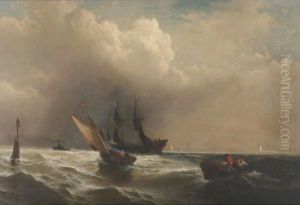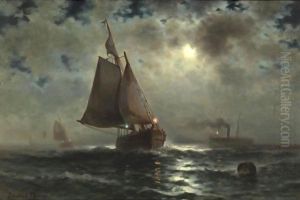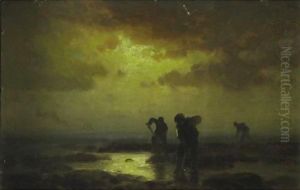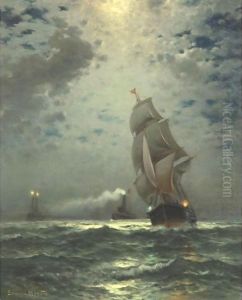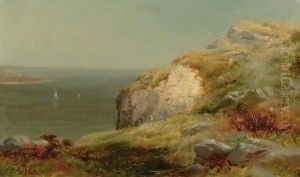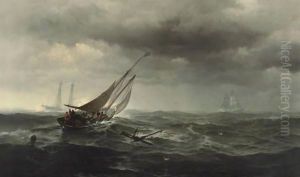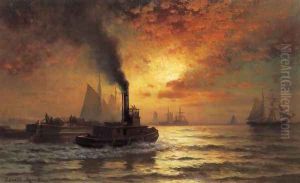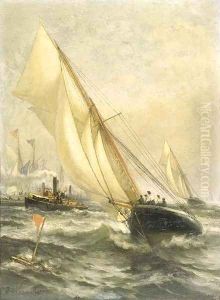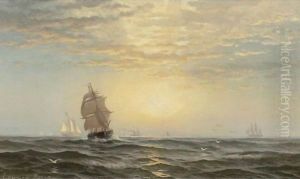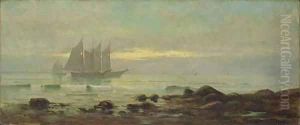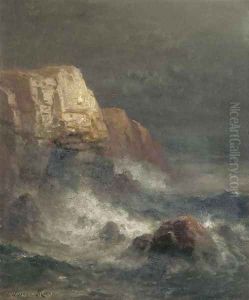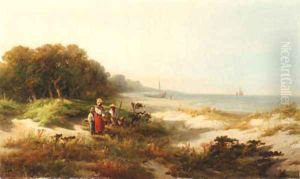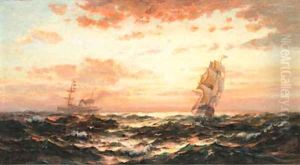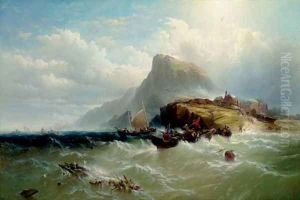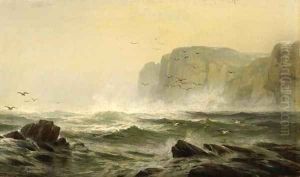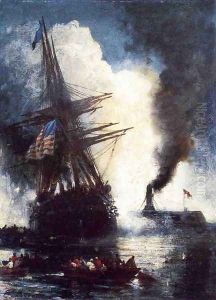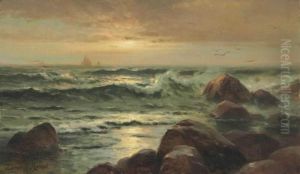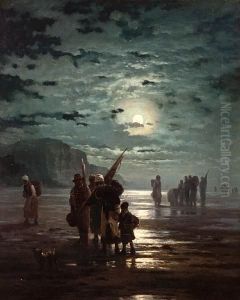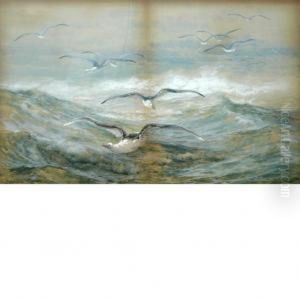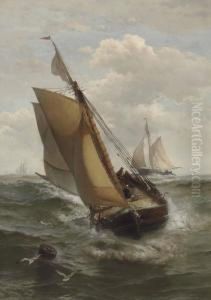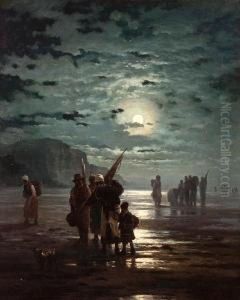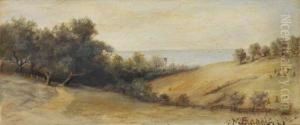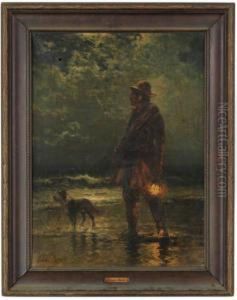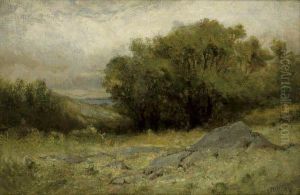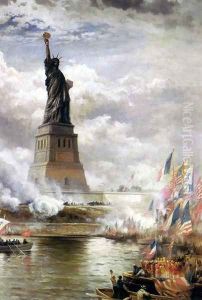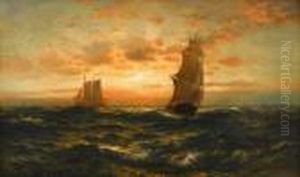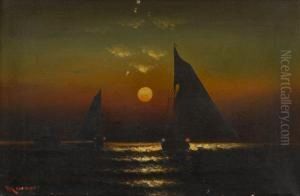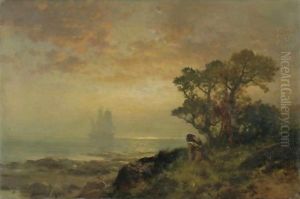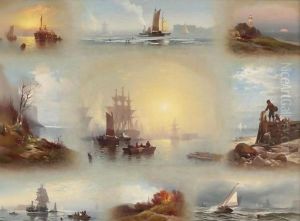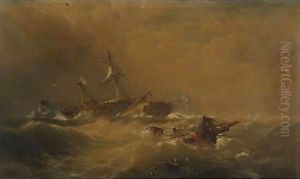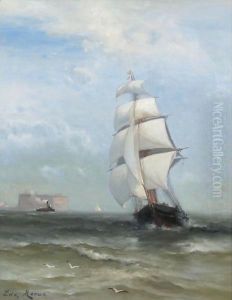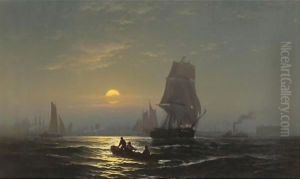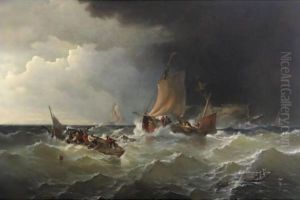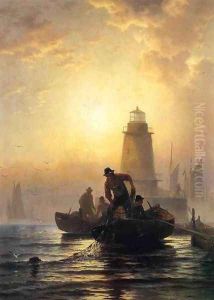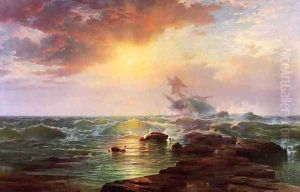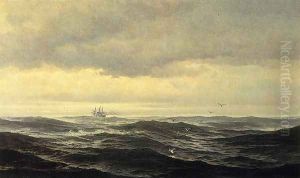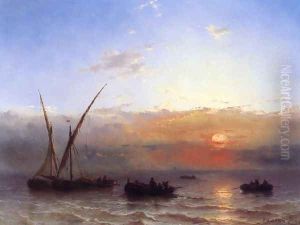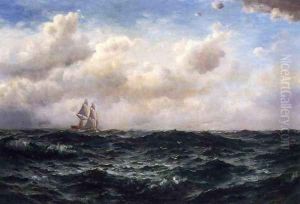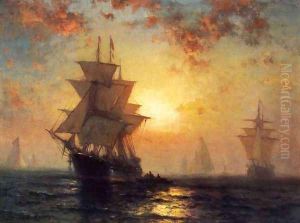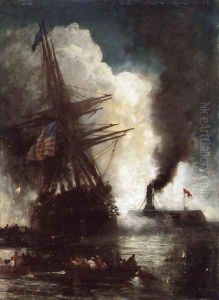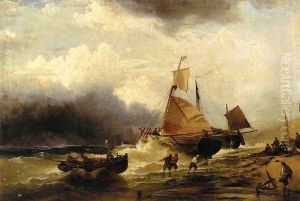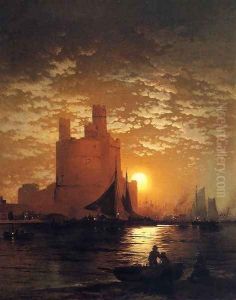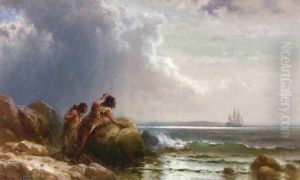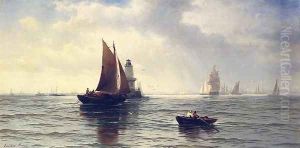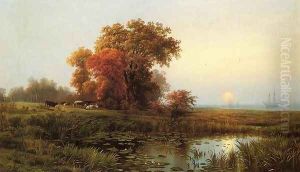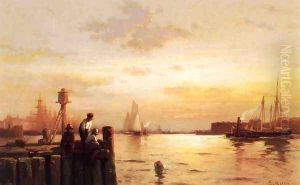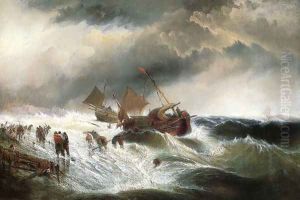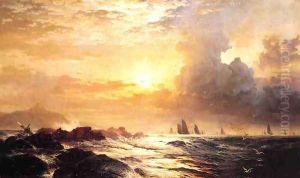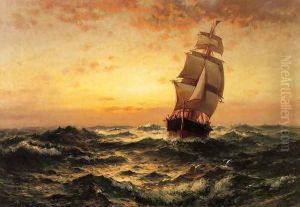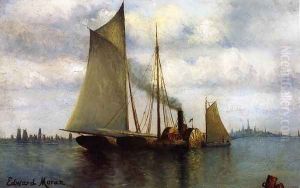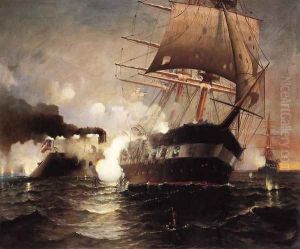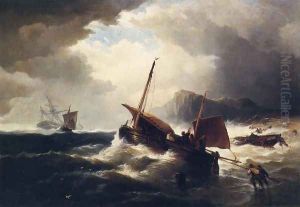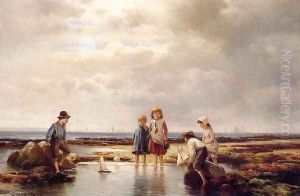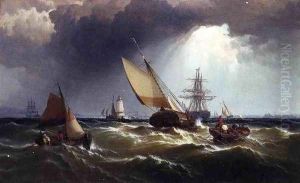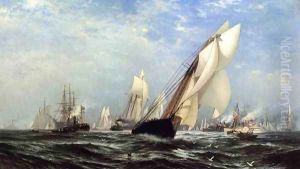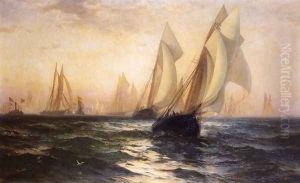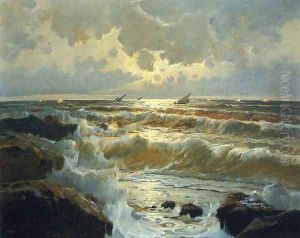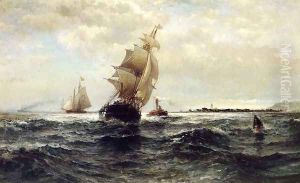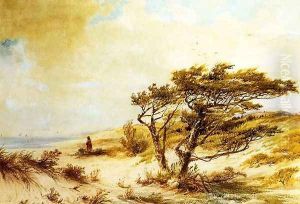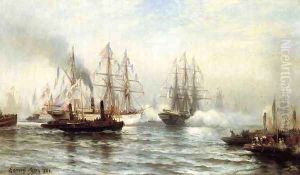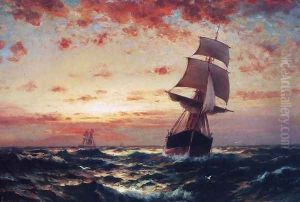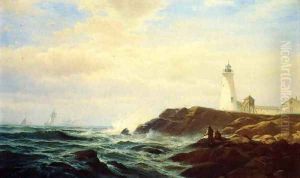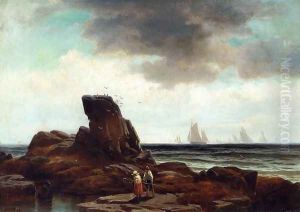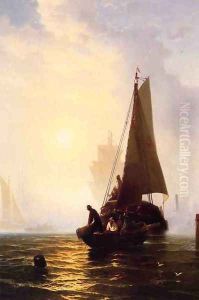Edward Moran Paintings
Edward Moran was a British-born American artist known for his marine paintings, which capture the majesty and power of the sea. Born in Bolton, Lancashire, England, on August 19, 1829, Moran came from a family deeply involved in the textile industry, but he would eventually take a path that led him far from his industrial roots. In 1844, seeking broader horizons, the Moran family emigrated to the United States, settling in Baltimore, Maryland, before moving to Philadelphia, Pennsylvania, where Edward would spend much of his life and career.
Moran's artistic journey began in earnest in Philadelphia, where he was initially apprenticed to a wood engraving firm. His early exposure to the arts ignited a passion that would define his life's work. Seeking to refine his skills, Moran traveled to Europe in the 1860s, a common practice among American artists of the time who desired to study the Old Masters and be exposed to the contemporary European art scene. During his time abroad, he was particularly influenced by the marine scenes of J.M.W. Turner, whose work would have a lasting impact on Moran's stylistic development.
Upon returning to the United States, Moran established himself as a prominent painter of marine subjects. His works often depicted historical naval battles, shipwrecks, and scenes of the American and British coasts, capturing the dynamic and tumultuous nature of the ocean. Moran's ability to convey the mood and atmosphere of the sea set his work apart, earning him acclaim and the admiration of his peers.
Throughout his career, Edward Moran was closely connected to his younger brother, Thomas Moran, who would also gain fame as an artist, particularly for his landscapes of the American West. The Moran brothers were part of a vibrant artistic community in Philadelphia and often collaborated on projects.
Edward Moran's contributions to American art were significant, not just for his masterful marine paintings but also for his role in the broader artistic movements of his time. He was a member of various artistic societies and exhibited his work widely, including at the Pennsylvania Academy of the Fine Arts and the National Academy of Design.
Moran's work remains celebrated for its historical significance and artistic beauty, capturing the infinite variety and majesty of the sea. He continued to paint until his death on June 8, 1901, in New York City, leaving behind a rich legacy of art that continues to inspire and captivate audiences. Edward Moran's paintings are held in high regard and can be found in museum collections across the United States, testament to his enduring impact on the world of art.

